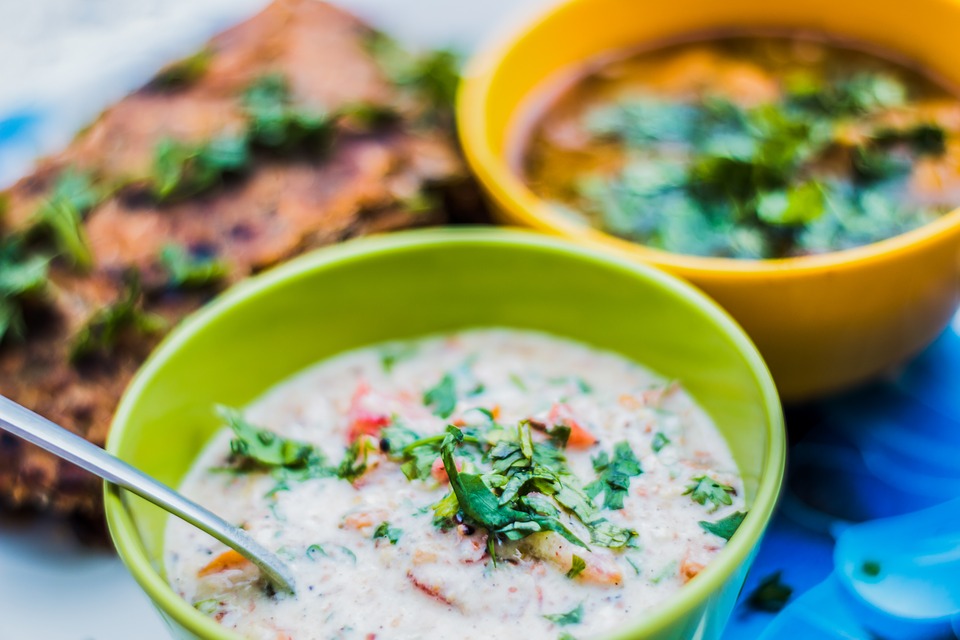When considering the Indian cuisine, I recall my old blind friend, Jal Jamson, whom one day upon entering my house exclaimed “this sure is a veritable feast of smells, scents and spice.”
In all honesty I thought this comment slightly weird and unnecessary, but regardless of this I laughed politely. On the surface however, this comment rang true in the Harris household circa 2005, a period when my father was most concerned with the art of curry.
He’d bring me into the kitchen and say “this is how to fragrance oil”, and would proceed to put the stove on a low heat, pour a couple of table spoons of vegetable oil into a pan (ghee is the traditional Indian fat). “Never olive oil, don’t you pour that olive oil into my curry, that’s only for Mediterranean food.”
He’d then add mustard seeds (1tsp), cumin seeds (2tsp), a bay leaf, crushed garlic (as much as you want), a diced onion, a chilli and some diced ginger (2tsp). As the spices cooked, he’d add meat or vegetables and fry until the spices were ‘fragrant’, the onions were browning, and the meat was sealed. The quantity, ratio and type of spices is up to you – what flavours do you want coming through more? Just experiment.
If you’re incredibly hungover and can’t be bothered to fragrance the oil, don’t worry – there’s a lazier way to do it. Grab a jar of curry paste from your local shop, balti is excellent or madras for a hot kick. Fry some onions until brown and meat or vegetables until sealed, and then add the paste (2-4 tbsp) and give it a mix.
This brings me back to good ol’ Jal Jamson, whom one day sitting upon our dining table blurted: “the scent of Patak’s fills the room, this is not the meal I was promised”. Jal was an eccentric, ungrateful kid and loved his curries, but after the day my dad had at work he wasn’t going to go the whole shebang, and unfortunately he underestimated the power of young Jal’s nostrils.
But I digress. At this stage you’re about ready to add a can of chopped tomatoes, do that and give it a stir. Taste it, add salt and pepper, and then more paste or powdered spices if you feel it needs some stronger flavours. Let it simmer and mix it occasionally.
As my dad always cooked for 3 people (himself, Mum and me), he had a foolproof approach for rice. He’d say to me “look at this mug”, and I’d look at the mug, and then he’d say “it’s a small mug isn’t it”, and I’d nod ceremoniously, as I did every time we went through his method.
He’d fill the mug with rice, put the rice into a pan, then pour double the amount of water over it and slam a lid on the saucepan. I must add, the mug used was absurdly small so about 1/2 – 3/4 of a normal sized mug would do for 3 portions, just put double the amount of water in. Heat the rice and water until boiling, then turn down the heat slightly (keep the lid on as steaming helps the rice cook).
To flavour the rice, add cloves or lemongrass and salt at the beginning of the process for a fresh aromatic taste. A lazier option; I recall saying to my dad “that was the best rice I’ve ever had”: a comment that would usually elate him, as most compliments about his cooking would do, but I was met with a face of despair and a disgruntled sigh as on this occasion he’d only added a chicken stock cube to the rice. Chicken or vegetable stock is great for rice.
When the rice is done, plate it up, eat it, enjoy it. Mango chutney is great with it too. Jal hated mango chutney, but my parents kept “forgetting” and put it on everything he ate.

